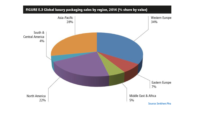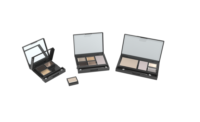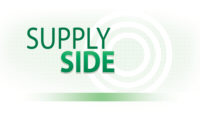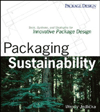Future Forecasts
The bright future of paperboard packaging

 Your company is part of a larger system, one that changes constantly. To be a leader, you must know how to separate flash-in-the-pan fads from valuable consumer research in order to make informed choices, identify opportunities and avoid pitfalls. By taking advantage of the coming technological trends in the packaging industry—and understanding the growing importance of eco-friendly substrates, such as paperboard—you will be well positioned to sustain and even grow your business, especially in tough economic times.
Your company is part of a larger system, one that changes constantly. To be a leader, you must know how to separate flash-in-the-pan fads from valuable consumer research in order to make informed choices, identify opportunities and avoid pitfalls. By taking advantage of the coming technological trends in the packaging industry—and understanding the growing importance of eco-friendly substrates, such as paperboard—you will be well positioned to sustain and even grow your business, especially in tough economic times.
As the public becomes increasingly aware of the detrimental effects of various substrates on human health and the environment, eco-conscious consumers are demanding that hard-to-recycle packages be replaced with renewable, recyclable substrates such as paperboard. Moreover, pressure continues to grow on municipalities and manufacturers to eliminate non-sustainable packaging materials from the waste stream (i.e., packaging made from a depleting resource, such as petroleum) and decrease non-biodegradable litter. So over the coming years, more structural designers will be utilizing recyclable paperboard in their package designs.
And we should not forget the growing cost of oil. Rising oil prices, which are expected to reach as much as $140/barrel over the next five years, will negatively impact the cost of not only transportation but also petroleum-based packaging substrates. In comparison, the cost of sustainable paperboard should remain relatively stable over the foreseeable future, positioning this substrate as a more financially viable packaging option for brand owners.
Another trend currently sweeping the packaging industry is short-run, customizable paperboard packaging. Since recent advancements in digital printing have made it possible to print on some heavy weight and glossy stock, paperboard has become a more workable substrate. As digital technology improves, we believe it will become more widespread as converters and designers have even greater functionality and opportunities for printing short-run jobs on paperboard.
Also, recently introduced advancements in digital diecutting and finishing hold promise for reducing costs and increasing throughput while more high-end decorative coatings—especially ones that are eco-friendly—will soon be entering the market as well. For example, we have seen revolutionary magnetized coatings for packaging closures and holographic coatings that are actually recyclable (i.e., not made with PET).
Of course, such advances in digital printing and diecutting demand that companies update their workflows to take advantage of the promise of faster turnaround. When digital printing swept into labels, for instance, entering an order frequently took longer than the actual production of the label. Because of this, streamlined, integrated workflows that run from order entry to production are now the norm in commercial label printing. We expect that these new workflows will be adopted by paperboard packaging companies as well over the coming five years.
With state-of-the-art, eco-friendly coatings and printing techniques becoming more accessible, designers and brand owners will have increased ability to create short run, custom packaging. And as the prices of petroleum-based substrates increase with rising oil prices, renewable, sustainable paperboard is positioned well to compete in the global marketplace. In a changing world with challenging economic circumstances, advancements such as these provide paperboard with a decidedly bright future.
Ben Markens is President of the Paperboard Packaging Council (PPC), the leading trade association serving suppliers and converters of all forms of paperboard packaging for over 84 years. PPC works to grow, promote, and protect the paperboard packaging industry while providing its members with resources and tools to compete effectively and successfully in the marketplace. For more information, call 413.686.9191 or visit www.paperbox.org.
Looking for a reprint of this article?
From high-res PDFs to custom plaques, order your copy today!








